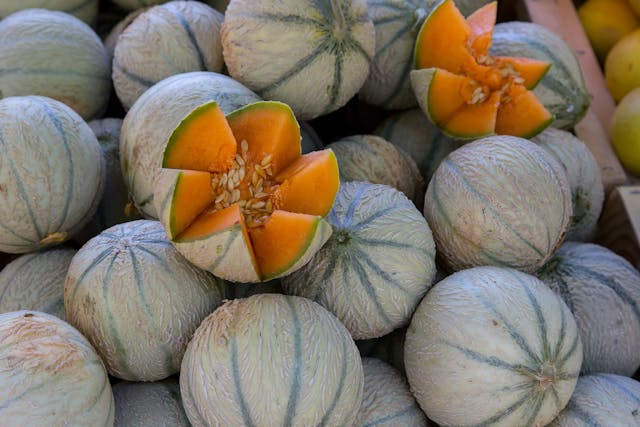Two themes I keep finding myself returning to on this site are simplicity, and finding beauty in the old, or everyday items we might otherwise overlook. Which is why I was so struck when I read this paragraph about Japan’s most famous poet, Basho:
“Buddhist teachings and the poetry of Basho train us to search for the
-ReichHold, jane, “Introduction” in Basho, The complete Haiku (2008)
essence, the very being, of even the smallest, most common things. One of the
goals of poetry is to penetrate this essence …”
So, given this is a food blog, I thought I’d spin the wheel on … melons … and see what Basho had to say about them. Basho’s earliest haiku is dated from 1662, and he wrote until his death in 1694.



There are quite a few haiku where melons were associated with keeping cool (absolutely the same association now, more than 300 years later.)
mountain shade
body to rest awhile
as a melon field
growing melons
“i wish you were here”
in the evening coolness
autumn coolness
each peeling with our hands
melons and eggplant
The last one was apparently a “greeting verse” for a renga party (collaborative poetry party). There are a couple with a play on words where the melon is associated with princesses and intimate lady parts.
beautiful
the core of the princess melon
is already a queen
a weird dark night
a fox crawls on the ground
for a beautiful melon
The fox is both how a real fox creeps like the melon plant, but also a metaphor about how a lover creeps into a house to steal the princess (melon).
And a few celebrating the practicality of the melon. The flower’s admired for its duality – for being useful, not just a pretty face; and while flowers are traditionally celebrated in spring and fruit in summer, the melon has both flower and fruit.
neither evening
nor morning belongs to
the melon flower
flowers and fruit
at the same time melons
at their peak
Do these haiku search for the “essence, the very being, of even the smallest, most common things“? Yes, I think they do 🙂

Period: Muromachi (1392–1573) The Metropolitan Museum of Art, New York http://www.metmuseum.org/Collections/search-the-collections/670904 Image in Public Domain. The Met says pictures of fruit and vegetables were displayed in temples as offerings, and may also have been displayed at summer tea gatherings.
Fun fact, apparently a popular pastime back then was carving faces into melons. If you’re interested, I write more on the theme of simplicity here and here x
Reference: Matsuo, Bashō, Jane Reichhold, and Shirō Tsujimura. Basho: The Complete Haiku First US edition., Kodansha USA, 2008, thehaikufoundation.org,







Leave a Reply